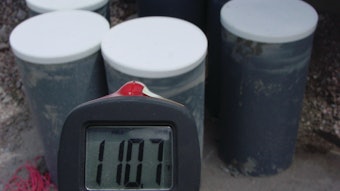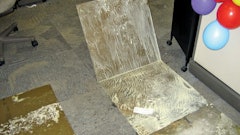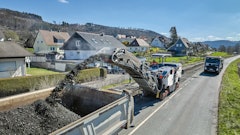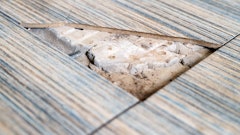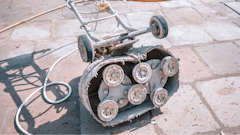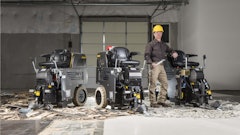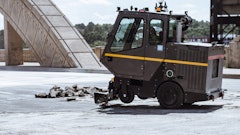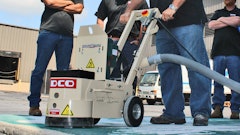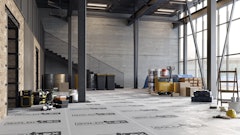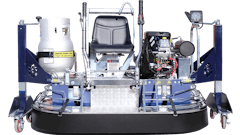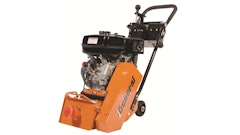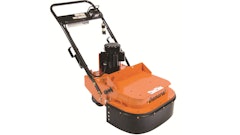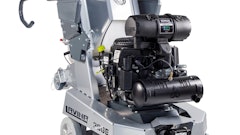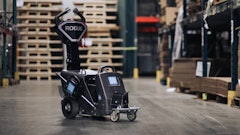
When we think of guillotines, our minds turn to scenes of the French Revolution, which have been graphically depicted in so many Hollywood movies. While it may have been inspired by the original device, in the surface preparation industry, the term has a different, more positive meaning.
By using either a walk-behind or a ride-on scraper, contractors can remove the remnants of an old floor — whether this is vinyl, carpet, woodblock or any traces of adhesive. As well as purchasing or renting the right scraper, it’s important to select the right tool, or blade, for the job.
What is a Guillotine Blade?
At National, we developed the guillotine blade as an angled alternative to the traditional heavy-duty straight blade. The latter is popular among contractors because it’s available in many standard sizes and is suitable for both ride-on and walk-behind scrapers.
The main difference is that while the heavy-duty blade is straight, the guillotine has a slightly angled edge. This allows contractors to slide into heavier materials and stay under them during removal, which can improve productivity by pulling up the surface effectively without damaging the substrate.
Contractors should match the blade to the application to deliver a high-quality floor effectively. Though effective, a guillotine shank is not a one-size-fits-all blade, and its suitability will vary depending on the application. Working with a floor preparation specialist when purchasing or renting a scraper can ensure that contractors make the right choice.
What if my Floor is Carpeted?
Take this example. A floor is located several levels up in the narrow hallway in an apartment block. The carpet is decades old, and the building’s owner wants to remove it as part of a larger renovation. Because of the weight and space restrictions, a walk-behind scraper is recommended, but what about the blade?
While the edge on a guillotine could be beneficial in these settings, the contractor needs a self-scoring blade so that they can crosscut the carpet, vinyl or linoleum. They will also need a blade with the bevel down so that they could skim over while protecting the wooden subfloor.
Rather than selecting a guillotine, we would recommend using a self-scoring wing-tipped blade for carpeted, vinyl, PVC or linoleum floors. While a guillotine can remove soft goods, carpet and vinyl flooring, these applications aren’t always the best use of it, and a wing-tipped blade would be more practical.
When Should I use a Guillotine?
Generally, guillotine blades are suitable for any application where contractors would use a standard heavy-duty blade. While it can technically remove soft goods, it is best suited to removing ceramics and thick, hard materials over a wide area. A wing-tipped tool would be inappropriate for these applications, and the blade could snap if the contractor forced it through the material.
If the contractor is working on a concrete floor and there are relief cuts that are obscured by ceramic tiling, a square blade would simply go over the area and the machine could bounce up as a result. Not only would this be startling to the operator, but the blade could also snap.
Meanwhile, because a guillotine has a leading edge, unlike a flat heavy-duty blade, it can go over the intentional ridges in the floor. This means it can continue to remove the material without stopping the operator in their tracks, which would usually happen with a flat shank.
While heavy-duty blades are an industry staple, their flat design is a restriction for contractors working on concrete floors, especially those with ridges. We developed the guillotine blade to overcome this barrier, but it shouldn’t be treated as a blanket solution. Contractors must always choose the right blade type for the application and machine, and working with a floor preparation specialist can help.

